rockfish
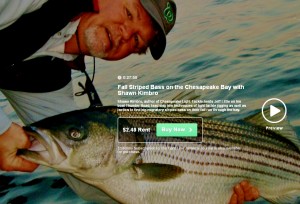 I mentioned in my last entry that I am working on a series of instructional videos with Jeff Little. Jeff is the owner of Blue Ridge Kayak Fishing and has produced four successful DVDs on kayak fishing and seasonal tactics for river smallmouth bass. In 2007 he authored My Life in a Kayak: In Pursuit of Trophy Smallmouth. He has numerous appearances in regional and national publications such as Bassmaster Magazine, North American Fisherman, Bassin’, Kayak Angler, and others. Besides Jeff’s obvious media and marketing skills, I am finding him to be a darn good fisherman.
I mentioned in my last entry that I am working on a series of instructional videos with Jeff Little. Jeff is the owner of Blue Ridge Kayak Fishing and has produced four successful DVDs on kayak fishing and seasonal tactics for river smallmouth bass. In 2007 he authored My Life in a Kayak: In Pursuit of Trophy Smallmouth. He has numerous appearances in regional and national publications such as Bassmaster Magazine, North American Fisherman, Bassin’, Kayak Angler, and others. Besides Jeff’s obvious media and marketing skills, I am finding him to be a darn good fisherman.
I mentioned last week how a good fisherman can be successful almost anywhere on any species when they learn to recognize patterns. There’s obviously more to it than that, but the key word in that sentence is learn. Light tackle casting for striped bass and other species on the Chesapeake Bay isn’t rocket science, but there is still a significant learning curve if you want to be consistently successful. Read More!
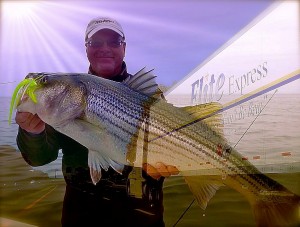 Tell someone where to catch a Chesapeake Bay striped bass and you may help them for a day, but teach them how to identify specific seasonal patterns, and you’ve put them on the express route to becoming an elite fisherman. The fall migratory run is on. This is the time of year when the learning curve drops significantly and stripers feed voraciously. They aren’t too picky about the kind of baits they’ll take and they aren’t as choosy about lure presentation. It’s a great time to learn how to cast lures for big fish. It’s also the time when I step up on my “think patterns, not places” soapbox. Ask any accomplished angler their secret to repeated success and they’ll tell you it’s the ability to identify specific feeding patterns. I believe that you can drop a good fisherman into any body of water in the world and he’ll catch fish as long as you give him enough time to recognize prevailing patterns. Pattern recognition is especially important on the Chesapeake where conditions change quickly. Fortunately, fish are creatures of habit and we can identify predictable characteristics in their behavior.
Tell someone where to catch a Chesapeake Bay striped bass and you may help them for a day, but teach them how to identify specific seasonal patterns, and you’ve put them on the express route to becoming an elite fisherman. The fall migratory run is on. This is the time of year when the learning curve drops significantly and stripers feed voraciously. They aren’t too picky about the kind of baits they’ll take and they aren’t as choosy about lure presentation. It’s a great time to learn how to cast lures for big fish. It’s also the time when I step up on my “think patterns, not places” soapbox. Ask any accomplished angler their secret to repeated success and they’ll tell you it’s the ability to identify specific feeding patterns. I believe that you can drop a good fisherman into any body of water in the world and he’ll catch fish as long as you give him enough time to recognize prevailing patterns. Pattern recognition is especially important on the Chesapeake where conditions change quickly. Fortunately, fish are creatures of habit and we can identify predictable characteristics in their behavior.
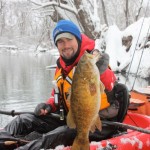
I fished this past Saturday with a new fishing buddy, Jeff Little. You may have heard of Jeff because he’s well-known in the kayak fishing world for his instructional DVDs and videos about smallmouth fishing. Fortunately for Chesapeake Bay fishermen, he’s been bit by the striper bug. I’ve teamed up with him to produce some videos that illustrate my most successful techniques. Stay tuned because we’ll soon be posting one we shot Saturday about striper fishing in the fall on the Chesapeake Bay. We’ll launch a short preview first. If you like it, you can watch the action-packed 30-minute version for just $2.49. Read More!
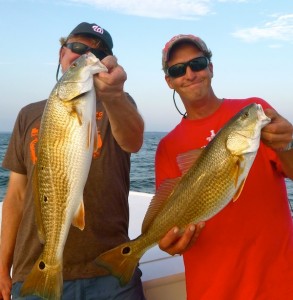 “If redfish keep biting like this, they can have the stripers!”
“If redfish keep biting like this, they can have the stripers!”
That’s a phrase I’ve heard more than once from Chesapeake Bay fishermen this year. I’ve been catching a few smallish reds around the Kent Island shoreline since May, but things have really opened up in the last week or so. Where are they and why are they here? I’ll tell you where later, but first let’s talk about why. Simply put, conservation measures are allowing red drum to expand their range. Successful fishing for slot-size red drum (fish between 18- and 27-inches long) is completely dependent on the success of spawning over the past three years. There is quite a bit of variation in a redfish’s rate of growth. At one year old, redfish will range from 10- to 17-inches long, averaging 14 inches. At two years old, they will range from 18- to 24-inches long. At three years old, they will range from 20- to 28-inches long, weighing four to nine pounds. If the reds you’re catching are in the slot, chances are they’re from the 2010 or 2011 spawning class. By all accounts, those were good years. Here’s the rest of the story: Read More!
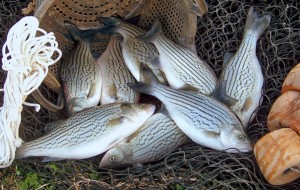 Number five: Aquaculture Accounts for Over FIFTY Percent of Stripers Sold – In fact, it’s closer to sixty percent. Hybrid striped bass production is one of the fastest growing forms of aquaculture in the United States. Annual production has increased over two-hundred percent in recent years as scientists refine efficient and highly productive ways to raise stripers. Commercial fishing for wild striped bass has a long history in Maryland, but don’t let anyone fool you into thinking you couldn’t eat stripers if they weren’t caught in the Chesapeake Bay. In fact, you’ll eat better if you eat farm-raised fish. Those of us who catch and eat fish right off the boat are used to great-tasting fish, but hybrid stripers have a slightly sweeter flavor and a more delicate texture than wild-caught fish. They don’t contain the high levels of mercury and PCBs found in Chesapeake Bay rockfish, so it’s safer to feed them to your family. Striped bass aquaculture is a sustainable method for providing healthy , high-quality fish to restaurants, grocery stores, and seafood markets. In stark contrast, a recent effort by the Department of Natural Resources to get wild-caught striped bass deemed sustainable in Maryland, failed. Read More!
Number five: Aquaculture Accounts for Over FIFTY Percent of Stripers Sold – In fact, it’s closer to sixty percent. Hybrid striped bass production is one of the fastest growing forms of aquaculture in the United States. Annual production has increased over two-hundred percent in recent years as scientists refine efficient and highly productive ways to raise stripers. Commercial fishing for wild striped bass has a long history in Maryland, but don’t let anyone fool you into thinking you couldn’t eat stripers if they weren’t caught in the Chesapeake Bay. In fact, you’ll eat better if you eat farm-raised fish. Those of us who catch and eat fish right off the boat are used to great-tasting fish, but hybrid stripers have a slightly sweeter flavor and a more delicate texture than wild-caught fish. They don’t contain the high levels of mercury and PCBs found in Chesapeake Bay rockfish, so it’s safer to feed them to your family. Striped bass aquaculture is a sustainable method for providing healthy , high-quality fish to restaurants, grocery stores, and seafood markets. In stark contrast, a recent effort by the Department of Natural Resources to get wild-caught striped bass deemed sustainable in Maryland, failed. Read More!
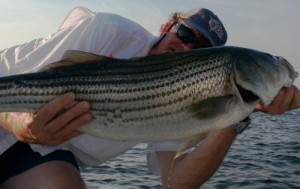 To share time-sensitive fishing information and relay real-time conditions on the water, I’ll be more active on Twitter. Last night at about 4:00 PM, I mentioned via Facebook that I would live-tweet a fishing trip starting at 5:30 PM. I’ll do this more often. Be assured that I won’t mention too many locations, but I’ll be specific about the patterns and techniques we encounter. I’ll also tweet pictures of the fish we’re catching, provide sonar shots, and share thoughts and details about hot lures and techniques. If you missed last night’s feed, you can read it on my Twitter page – @shawnkimbro. You can also follow me there to get the info live as it happens. I can’t do this all the time, but I’ll re-post last nights feed here, with some additional details and commentary inserted in italics. I’ve also cleaned up spelling and grammar since I use Google Voice instead of trying to type on my android touch-screen with wet hands. All the pictures (click the Twitter links) including the one to the left were tweeted live from the water.
To share time-sensitive fishing information and relay real-time conditions on the water, I’ll be more active on Twitter. Last night at about 4:00 PM, I mentioned via Facebook that I would live-tweet a fishing trip starting at 5:30 PM. I’ll do this more often. Be assured that I won’t mention too many locations, but I’ll be specific about the patterns and techniques we encounter. I’ll also tweet pictures of the fish we’re catching, provide sonar shots, and share thoughts and details about hot lures and techniques. If you missed last night’s feed, you can read it on my Twitter page – @shawnkimbro. You can also follow me there to get the info live as it happens. I can’t do this all the time, but I’ll re-post last nights feed here, with some additional details and commentary inserted in italics. I’ve also cleaned up spelling and grammar since I use Google Voice instead of trying to type on my android touch-screen with wet hands. All the pictures (click the Twitter links) including the one to the left were tweeted live from the water.
 Shawn Kimbro
Shawn Kimbro @ShawnKimbro 19h
Tweeting details of tonight’s fishing trip beginning 5:30 pm. #stormdodging
*I actually started a little earlier with a few preliminary details.
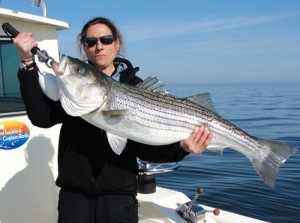 In the fifty years or so I’ve had to observe the behavior of fishermen, I’ve noticed a few trends. While collecting thoughts for my next book, I’m forming a list of traits that I think good fishermen have in common. In the book, I’ll concentrate primarily on gear and tackle but I also want to spend some time examining habits and attitudes that successful anglers share. You know, the right stuff. One penchant stands out above all the rest – good fishermen like to release fish. Not only do they like to let them go, but they look for ways to insure they survive once they swim away. Accomplished anglers find satisfaction in returning a fish to the water and they enjoy the thought that other fishermen will also have the opportunity to experience the thrill of a trophy catch.
In the fifty years or so I’ve had to observe the behavior of fishermen, I’ve noticed a few trends. While collecting thoughts for my next book, I’m forming a list of traits that I think good fishermen have in common. In the book, I’ll concentrate primarily on gear and tackle but I also want to spend some time examining habits and attitudes that successful anglers share. You know, the right stuff. One penchant stands out above all the rest – good fishermen like to release fish. Not only do they like to let them go, but they look for ways to insure they survive once they swim away. Accomplished anglers find satisfaction in returning a fish to the water and they enjoy the thought that other fishermen will also have the opportunity to experience the thrill of a trophy catch.
I love to eat fish. I just returned from a week-long fishing trip to the Abacos Islands where my sons and I ate the fish we caught every day. I don’t begrudge anyone the opportunity to eat their catch, but every angler has to release fish from time to time. Better anglers can’t possibly eat all the fish they catch, nor do they want to. I’ve written about this in the past, so instead of going into a step-by-step breakdown of best-practices, I thought I’d try to make it a little more fun by turning it into a quiz. Think you have a good handle on how to take care of the fish you plan to release? Check it out: Read More!


